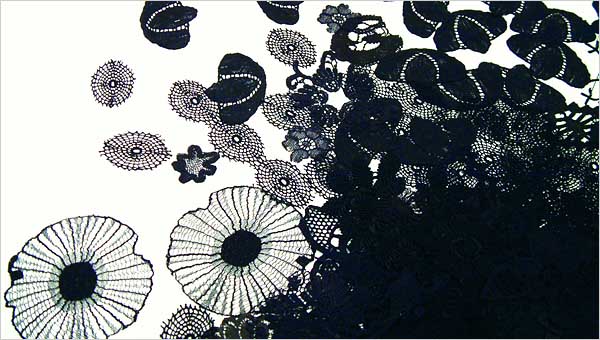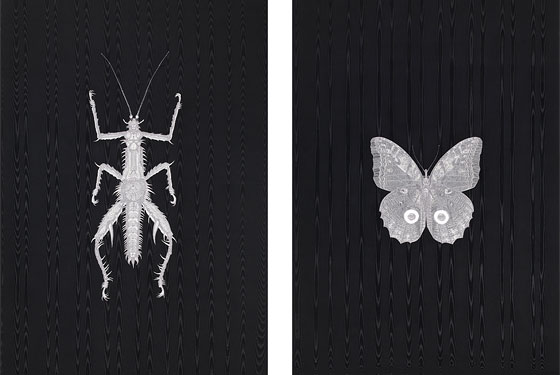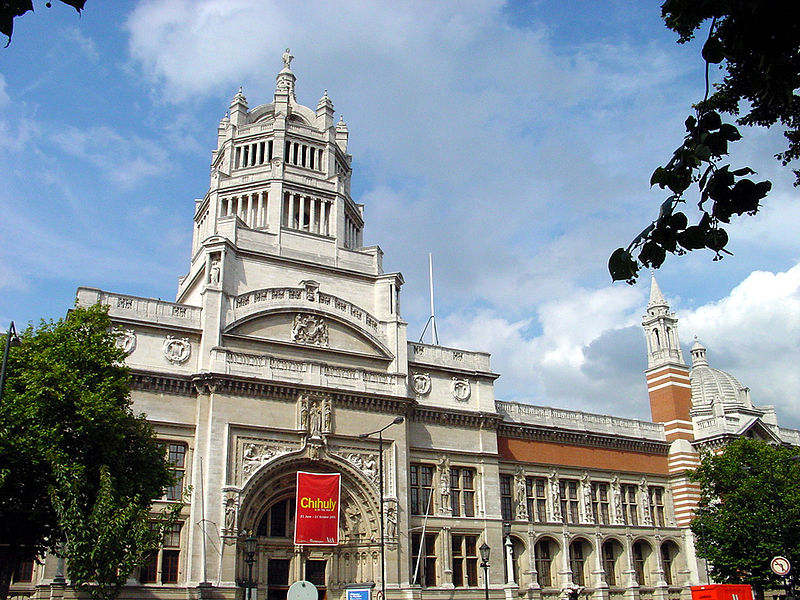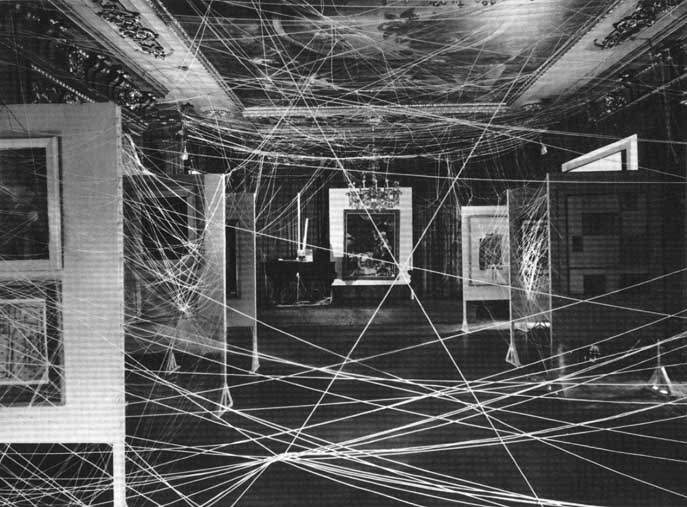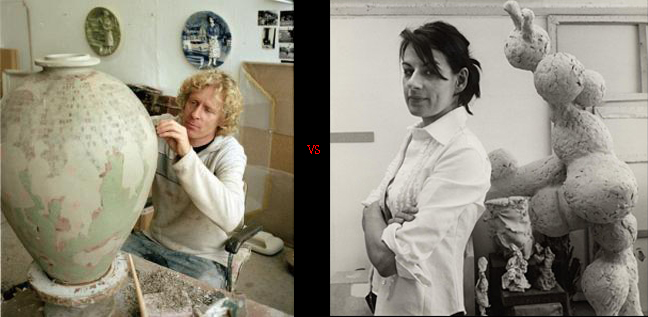
|
||
|
Portland art blog + news + exhibition reviews + galleries + contemporary northwest art
|
||
Anne Wilson: A Portable Interview
Lucio Fontana, "slash series" Why? I have always loved Lucio Fontana's "slash series," not only in relation to Arte Povera and expanding the objectness within painting practices, but also in emotive sensibilities of violence, direct performance, and sexuality. Although my own series of works like the "Grafts" and "Disrepairs" come from a different time period and set of concerns, I still look at similarities and correspondences in the puncturing of a surface. I was reading the article "Sloppy Craft" by Glenn Adamson and these phrases caught my eye. What artists do you relate to these words? Topographic: Matthew Ritchie and many others artists intersted in mapping concepts; also conceptual walking practices. Texture: Grau Garriga, Magdalena Abakanowicz's Abakans, Ritzi + Peter Jacobi's early collaborative woven work, Sheila Hicks, Ursula Von Rydingsvard Art-though-craft: Yoshihiro Suda, Susan Collins, Annie Cattrell, Paul Marioni, Katherine Gray, Josiah McElheny, Gord Peteran, Tim Hawkinson, Beverly Semmes, Martin Puryear, Angelo Filomeno, Tom Friedman, Ghada Amer, Nick Cave, Ruriko Murayama, Carole Frances Lung, Diana Guerrero-Macia, Cat Mazza, Mark Newport, Joan Livingstone, Luanne Matinueau, Lia Cook, Anna Von Mertens, Lacey Jane Roberts, Christy Matson, Sabrina Gschwandtner, Liz Collins, Allison Smith, Janet Echelman, Susie Brandt, Annet Couwenberg, Piper Shepard, Virgil Marti, Christian Holstad, Josh Faught, Jessica Jackson Hutchins, Nan Curtis, Tracey Emin, Oliver Herring, Yinka Shinabare, El Anatsui, Anni Albers -- the list goes on, endlessly! Conversational: Deb Sokolow, Darrel Morris, many of the artists in the New Museum's Unmonumental show (2007) Provisional: Most of the artists in the New Museum's Unmonumental show Un-heroic: Most of the artists in the New Museum's Unmonumental show, early Mike Kelly What are you currently working on? I'm working towards this exhibition: A second piece, a video projection of the performance WIND-UP: WALKING THE WARP, first performed at Rhona Hoffman Gallery in Chicago will be in another area of this space. EXHIBITION SPACE 2 will present LOCAL INDUSTRY. One large museum space will be set up as a textile factory -- multiple tables with fiber bobbin winding tools at regular intervals for groups to work (adults, university students and school-age children), to wind hundreds of weaving bobbins of colorful fibers donated from textile mills. Using one loom within the factory, experienced weavers from Knoxville and surrounding states are invited to take turns weaving a continuous bolt of striped cloth. Once one weaver has completed a passage of stripes, the next weaver responds to that passage, making a color transition that moves into new striped color passages of individual choice. Proceeding this way, although abstract, relates to the Surrealist exercise of "exquisite corpse" drawing. The completed woven cloth bolt will be given to the KMA collection with a comprehensive archive of all who participated. Participation in this collaborative group process invites discourse and debate about the contemporary production of textiles, and the crisis of production, worldwide. Rich histories of both handcrafted and industrially produced textiles in the Southeast are a key reason to locate this project at the KMA. "Local Industry" also engages in the multi-faceted discussions about new participatory forms in contemporary art. How do you relate to knitting and topography? Knitting can be thought of as a kind of 2 1/2 D structure, a structural skeletal network describing itself; a pliable plane where all lines are totally integrated and interdependent -- one thread falls off a hook, out of tension, and this action reverberates throughout the entire system, like a run in a stocking. What important topics in contemporary art are relevant to your work? Post-disciplinary, labor, collaboration/participatory practices, relational aesthetics, conceptual craft, cloth and the crisis of production. Does fractal geometry influence you/your work?
I do not see a paradox between fallibility and craft. I don't think of craft as "the striving for perfection." I think of craft being employed as appropriate to content or to a conceptual structure. I place no inherent value in either sloppiness or perfection. When I was at the V&A Museum in London last year I wrote down the text that arches over the grand entry doors. It says: "The excellence of every art must consist in the complete accomplishment of its purpose." As an artist making conceptually generated work, the craft or the technology/method of fabrication, be it refined or very sloppy, is most appropriate in its critical relationship to the intended concept. Sloppy Craft - would you talk a bit about this term? What do you seeing in the work of your students that led to this term? Well, that's what the upcoming conversation is about at the Contemporary Craft Museum in Portland! Lots to say here. And well, you know the Glenn Adamson essay that came about from my participation at the V&A's Fabrications conference in 2007.
Feminism, Queer theory, Multi-culturalism and the inclusion of non-Western aesthetics, the Art Fabric movement, Globalism, critical discourse through increased publications, conferences, symposiums. What role does teaching and the merge of material- and process-based practice with conceptual practice play today... in the next 5-10 years? What do you learn from your students - and how does/has that impacted your own practice? I have been thinking a lot about this question. Before I took the recent rotation as department chair of Fiber and Material Studies at SAIC, I taught a class called "Time, Material, and the Everyday." It was a conceptually driven and research based class that brought together advanced students from across material and digital/new technology disciplines at the school. The course bibliography keeps expanding and is a collaboration between me, my graduate teaching assistants, and my students. The process of conceptualizing and teaching this class has permeated my thinking in my art practice in terms of collaboration, participation, and collective authorship. A longer conversation overall.... In my conversations with KMA curator Chris Molinski recently, I acknowledge that one project within the exhibition, called "Local Industry," is really an intersection of pedagogy and aesthetic production. When craft loses its utilitarian value does it retain its essence of craft? How do you define that essence? I define craft very liberally, with multiple histories, theories, and outcomes. I am not so interested in the competition between the various strains of thinking, but more in extending or elaborating the intersections, content, and new possibilities. Garth Clark said to me in an interview: "Craft is an evolutionary movement not a revolutionary one. And so if someone tries to make revolutionary ceramics and crafts they don't have an audience. And seeing as though they're making something that looks like fine art why not just make it in fine art and be done?
All the time. You can call art anything you wish. Look at the historical model of Marcel Duchamp. Part of the issue is to be interested in the discourse of art at any given time. Who would win in a craft-off: Grayson Perry or Rebecca Warren?
Thank you Anne. Looking forward to hearing more at the Lectures. Here again is the calendar. Posted by Alex Rauch on October 08, 2009 at 14:21 | Comments (0) Comments Post a comment Thanks for signing in, . Now you can comment. (sign out)
(If you haven't left a comment here before, you may need to be approved by
the site owner before your comment will appear. Until then, it won't appear
on the entry. Thanks for waiting.)
|
| s p o n s o r s |
 |
 |
 |
 |
 |
 |
 |
 |
 |
 |
 |
 |
 |
 |
 |
 |

|
Site Design: Jennifer Armbrust | • | Site Development: Philippe Blanc & Katherine Bovee | |


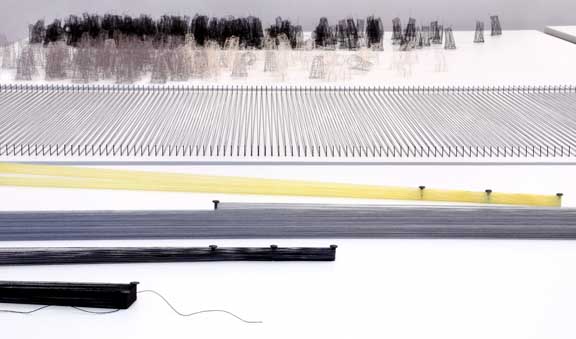
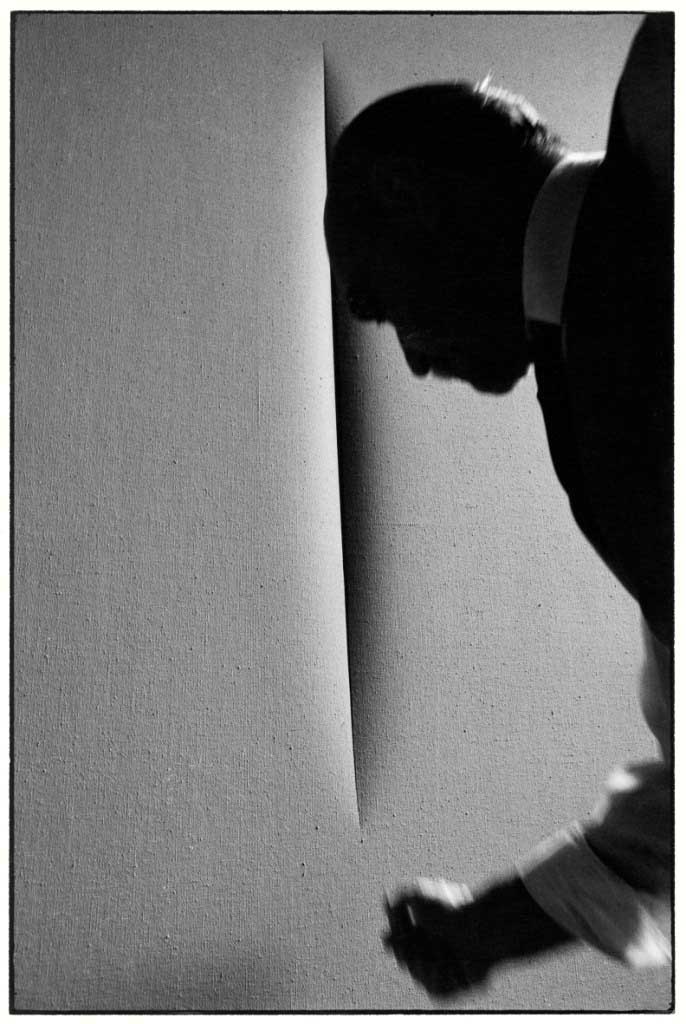
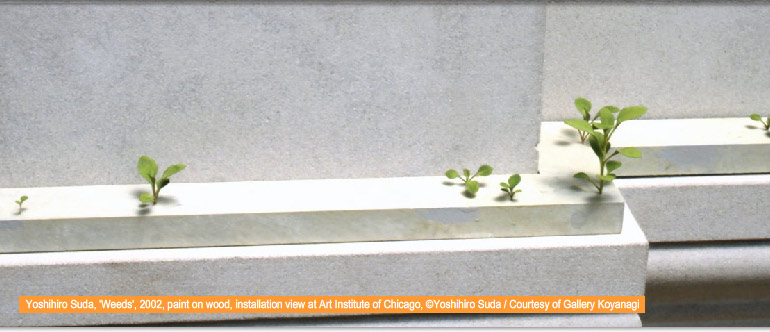

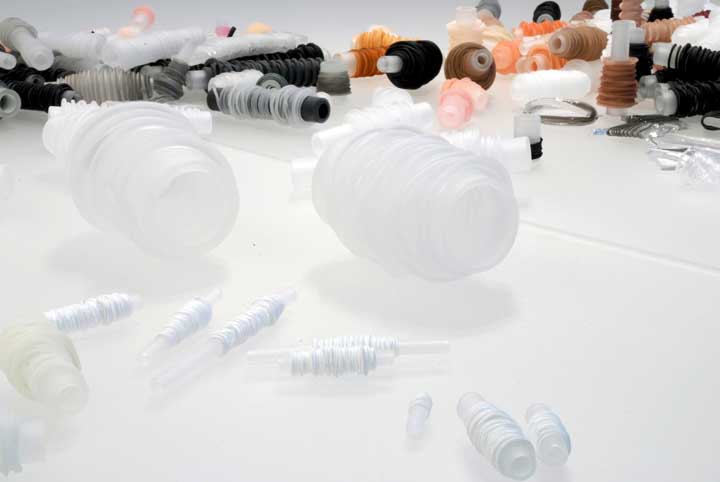 Anne Wilson
Anne Wilson